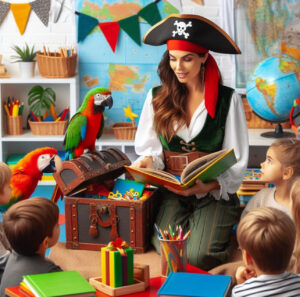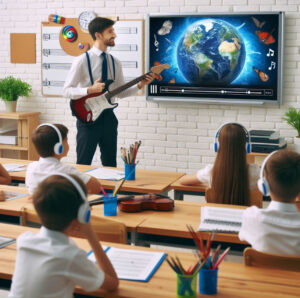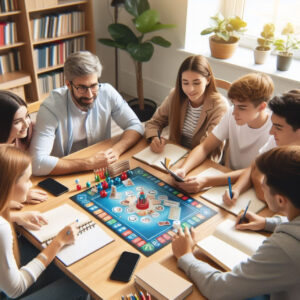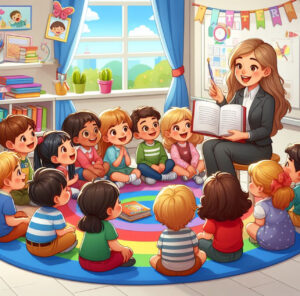

Make Your Class More Interesting
How do you spice up your teaching methods? Teaching can be a deeply gratifying experience, but it can also be demanding and exhausting. If you feel like your teaching methods are getting stale and boring, or if you want to try something new and exciting in your classroom, this article is for you. Today, you will learn the ten creative ideas that will spice up your teaching methods and make your lessons more fun and engaging for you and your students.
Use props and costumes


Props and costumes can add a lot of humor and interest to your lessons, especially if you are teaching history, culture, or literature. For example, you can dress up as a famous historical figure, a character from a book, or a person from another country and act out a scene or a dialogue with your students. You can also use props such as hats, glasses, masks, or puppets to create different roles and scenarios for your students to practice speaking skills.
Play music and videos


Music and videos can enhance teaching methods and appeal to different learning styles. Use them to introduce a topic, illustrate a concept, provide examples, or review the content. Specifically, you can play a song that relates to the theme of your lesson and ask your students to listen for specific words or phrases. The most common strategy in presenting literature is a video clip showing a skill or technique I want my students to learn or apply.
Incorporate games and quizzes


Games and quizzes can make your teaching methods more interactive and fun. They also reinforce the learning outcomes and assess the progress of your students. Utilize competitions and quizzes to review the material, check your understanding, or practice the skills. For instance, let them play Jeopardy to test their knowledge of the facts and concepts taught. Also, please use online platforms such as Kahoot or Quizizz to create engaging quizzes students can take on their devices.
Use realia and authentic materials


Authentic materials are objects and texts used in real life and not designed for teaching purposes. They can make your teaching methods more realistic and relevant. They expose your students to natural and varied language in different contexts and situations. For instance, you can use realia such as menus, flyers, tickets, or maps to teach vocabulary, grammar, or functions. Similarly, you can use authentic materials such as newspapers, magazines, podcasts, or blogs to teach reading, listening, or writing skills.
Invite guest speakers and experts


Guest speakers and experts can add value and variety to your teaching methods. They can also motivate and inspire your students. You can invite guest speakers and experts to share their knowledge, experience, or perspective on a topic related to your curriculum or your students’ interests. For example, you can invite a psychologist to talk about psychology, a traveler to share their stories, or a professional to give career advice. Moreover, you can use video conferencing tools like Zoom or Skype to connect with guest speakers and experts.
Go on field trips and virtual tours


Field trips and virtual tours can make your teaching methods more experiential and adventurous, as well as expand the horizons and perspectives of your students. Go on field trips and virtual tours to visit places relevant to your subject matter or your student’s curiosity. To illustrate, you can go on a field trip to a museum, a park, or a factory to learn more about history, nature, or industry. Furthermore, you can take a virtual tour to explore the world, such as the historical places in your lessons.
Do experiments and projects


Experiments and projects can make your teaching methods more hands-on and inquiry-based, developing your students’ creativity and problem-solving skills. Besides, you can do experiments and projects to investigate a question, test a hypothesis, or create a product related to your topic or your students’ interests. For example, you can experiment to demonstrate a scientific phenomenon, such as how volcanoes erupt and plants grow. Moreover, you can do a project to produce something that showcases your students’ learning, such as a poster, a brochure, or a podcast.
Use humor and storytelling


These can make your teaching methods more enjoyable and memorable. Also, they can build rapport and trust with your students. You can use humor and storytelling to capture the attention, lighten the mood, or illustrate a point. Make a joke, a pun, or a funny analogy related to your topic or your students’ experiences. Storytelling to share a personal anecdote, a fable, or a case study that conveys a message or a lesson can also be one of the best examples.
Give choices and options


Giving choices and options can make your teaching methods more flexible and personalized as they empower and motivate your students. You can suggest options for them to have some control and autonomy over their learning process and outcomes. It is good to give choices and options to your students on what they want to learn, how they want to, or how they want to demonstrate their learning. In addition, give them choices and options on the pace, difficulty, or format of your lessons.
Celebrate and reward


Celebrating and rewarding can make your teaching methods more positive and encouraging, as well as acknowledge and appreciate the efforts and achievements of your students. Reward your students to let them feel you care and are proud of them. Specifically, celebrate and reward your students by giving them praise, feedback, or recognition for their work or behavior. In addition, you can also celebrate and reward them by giving them stickers, certificates, or prizes for their accomplishments or improvements.
Conclusion
These are some creative ideas you can use to spice up your teaching methods and make your lessons more fun and engaging for you and your students. Of course, you don’t have to use all of them at once or all the time. Choose the ones that suit your style, goals, and context. Aside from this, experiment with different combinations and variations of these ideas to see what works best for you and your students. The most important thing is to have fun and enjoy teaching!
If you have any questions or comments, feel free to leave them below. Thanks for reading, and I’ll see you at the next one!




